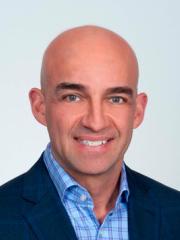Pulse Oximetry Journal Publication Highlight Podcast
In this episode, Dr. Bilkovski provides highlights of a recent publication that evaluated the accuracy of several industry leading pulse oximetry devices.
Show Notes
Transcript
Speakers
In this episode, Dr. Bilkovski provides highlights of a recent publication that evaluated the accuracy of several industry leading pulse oximetry devices.
Hi there, this is Dr Robert Bilkovski and in this episode, I would like to provide highlights of a recent publication that evaluated the accuracy of several industry leading pulse oximetry devices. The publication is titled “Comparative analysis of signal accuracy of three SpO2 monitors during motion and low perfusion conditions” and was released in the Journal of Clinical Monitoring and Computing. I was a co-author in this study with Dr. Karen Giuliano.
To begin, let us look into pulse oximetry itself, its history and some of the limitations to accuracy. Pulse oximetry, which indirectly measures oxygen saturation, is one of the most useful and widely used physiologic measurements in both the inpatient and outpatient setting. t This technology has been in clinical use for decades and dates back to the early 1970s when two Japanese inventors first filed patent applications that became the foundation for current pulse oximeter technology.[1] A more detailed description of pulse oximetry (or SpO2) technology is beyond the scope of this podcast, but I direct you to the journal article which provides a concise overview of the principles used in pulse oximetry technology.[2]
There are multiple factors that may affect the accuracy of pulse oximeters, some of which include:
- low perfusion
- motion, skin pigment
- anemia and
- dyshemoglobinemias, among others
These factors can lead to inconsistent SpO2 signals or SpO2 inaccuracy which may result in the delayed recognition of hypoxemia or an overestimation of oxygenation status. SpO2 accuracy is of importance to all patients, especially with critically ill patients or patients where care decisions may be influenced by threshold SpO2 levels. Device manufacturers continue to improve their technology to reduce measurement errors, including those caused by motion and low perfusion. The use of newer algorithms and advances in sensor hardware have been shown to improve clinical performance by reducing the frequency of both data dropout and false alarms. Additional improvements have focused on sensor comfort, durability, and disposable options while moving towards the future goal of broadly available wireless, wearable pulse oximetry. The purpose of this study was to evaluate and compare the accuracy of three currently available pulse oximeters:
- GE HealthCare CARESCAPE ONE´s TruSignal SpO2 Parameter,
- Masimo RADICAL-7,
- Medtronic Nellcor PM1000N SpO2
… under simulated conditions of motion and low perfusion in a group of healthy volunteers.
In total 28 healthy adult volunteers participated in one of two cohorts testing simulated motion or low perfusion conditions. There were 14 subjects randomly allocated into each of the cohorts.
The subjects underwent a controlled deoxygenation protocol using air–nitrogen–carbon dioxide mixtures in order to achieve saturation plateaus ranging between 70%-100%. This protocol has been used in support of other publications using similar pulse oximeters.[3]
In the simulated protocol, motion was induced palm down using a hand clenching, pressing and rubbing motion, palm up with twitching/clenching motion, and a tapping motion. Motion conditions were generated by the test subjects with variable intensity and frequency. While the low perfusion protocol had the subject's left arm submerged in an ice bath while the right arm was kept warm to serve as a control. The duration of arm submersion was determined by the Perfusion Index (PI) which is calculated as the ratio of pulsatile blood flow divided by the non-pulsatile blood flow times 100.
Turning our attention to the results, the mean age was similar in both cohorts, being slightly greater than 28 years of age. And in the motion study 5 subjects were female compared to 9 in the low perfusion study.
In the motion study, the SpO2 measurements were compared to the gold standard arterial oxygenation measurement, the different between the two is called “bias”. Mean bias across all saturation ranges was less than 1% for each device. Another measurement of pulse oximeter performance is the Accuracy Root Mean Square (or ARMS). Without getting too complicated, the ARMS is a measurement of precision, how closely spaced are the measurements to one another and the mean. The ARMS was lowest for GE HealthCare at 2.45% and highest for Nellcor at 4.15%. Significant differences in bias were observed in all analyzed ranges as well as differences in ARMS across all devices.
Switching gears to the low perfusion cohort, across all perfusion ranges the SpO2 measurement mean bias was the lowest for Nellcor at − 0.35% and greatest for Masimo at 1.62%, which was statistically significant. ARMS was lowest for GE HealthCare at 3.26% and highest for Masimo at 4.30%, but not significant. Of note, the accuracy of SpO2 measurement during low perfusion conditions showed a greater degree of degradation when compared to normal perfusion, with statistically significant differences in bias found primarily in the low perfusion measurements. And lastly, in Nellcor and Masimo SpO2 measurements there was an increase in the proportion of missing values within the ultra-low perfusion index assessment, suggesting that a threshold for the pulse oximeter performance may have been reached.
The clinical implication for loss of pulse oximetry signals due to low perfusion is a challenge that may require additional interventions to estimate arterial oxygen levels and hemoglobin saturation. If the signal is lost from a finger, probes may be applied on different body parts in accordance with the manufacturer’s Instructions for Use. Alternatives to pulse oximetry include arterial blood gas sampling which is invasive, potentially painful, and can be associated with increased risk of patient morbidity due to risk of injury to the artery.
In closing, the overall finding from this study is that all three SpO2 devices performed similarly across simulated motion and low perfusion conditions. Consistent with previous research on the impact of motion,[4] the SpO2 measurement accuracy degraded for all three devices when compared to non-motion controls. In addition, the low perfusion conditions also showed a degradation in accuracy as the perfusion index was reduced. Clinically significant questions remain for the potential contributions of variations in skin pigmentation under conditions of motion and low perfusion and this is the focus on ongoing study.
This ends this podcast on this review of the pulse oximetry accuracy study and thank you for listening today. Be on the lookout for more topics covered in coming podcasts. Thank you.
References:
[1] Miyasaka K, Shelley K, Takahashi S, Kubota H, Ito K, Yoshiya I, et al. Tribute to Dr. Takuo Aoyagi, inventor of pulse oximetry. J Anesth. 2021;35(5):671–709.
[2] McMorrow RC, Mythen MG. Pulse oximetry. Curr Opin Crit Care. 2006 Jun;12(3):269-71.
[3] Louie A, Feiner JR, Bickler PE, Rhodes L, Bernstein M, Lucero J. Four types of pulse oximeters accurately detect hypoxia during low perfusion and motion. Anesthesiology. 2018;28(3):520–30
[4] Louie A, Feiner JR, Bickler PE, Rhodes L, Bernstein M, Lucero J. Four Types of Pulse Oximeters Accurately Detect Hypoxia during Low Perfusion and Motion. Anesthesiology. 2018 Mar;128(3):520-530.

Dr. Robert N. Bilkovski, MD, MBA
President, RNB Ventures Consulting Inc.
Dr. Bilkovski has broad management experience, having served in leadership roles in multiple Fortune 500 companies overseeing medical affairs and clinical development in IVD, medical device, and pharmaceuticals industries. Some of the companies where he served in leadership roles include Hospira, GE HealthCare, Abbott Laboratories, and Becton Dickinson. Robert currently is the President of RNB Ventures Consulting Inc. providing strategic consulting in the field of medical and clinical affairs for medical device and diagnostic companies.
Dr. Bilkovski received his undergraduate degree in biochemistry with a focus in genetic engineering at McMaster University in Hamilton, Ontario, Canada. Robert completed his medical training at Rosalind Franklin University/The Chicago Medical School and subsequently pursued specialization in emergency medicine. Lastly, Dr. Bilkovski earned his MBA at the University of Notre Dame as part of his transition from clinical medicine to medical industry.










